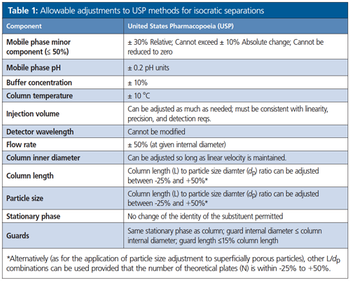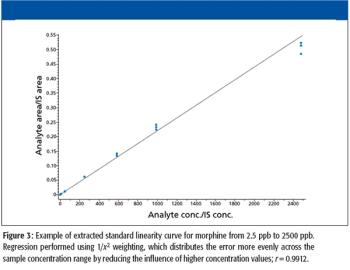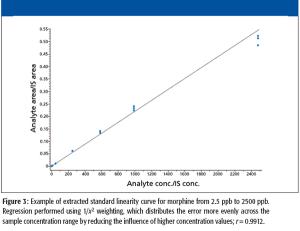Articles by Philip J. Koerner

The implementation of the FSMA (Food Safety Modernization Act) and the continued globalization of the food supply have increased the need for improved analytical methods for quality and safety testing. Food safety and quality requirements are increasingly stringent, as are consumer expectations. In addition to new methods, the industry continues to look for improvements in laboratory productivity and new ways to reduce costs. These trends extend to dietary supplements and natural products. This article discusses the current state of efforts to modernize US Pharmacopeia (USP) compendial methods to take advantage of new chromatography technology, including the use of “allowable adjustments”.

In pain management analysis, urine is often used as it is a copiously available bodily fluid that can be collected easily and used for analysis.

For many years, the use of guard columns has been advocated by column manufacturers and other experts to protect and extend column lifetime and performance of analytical columns from potential damage caused by the presence of chemical contaminants and microparticulates in the sample and mobile phase.

Fast turnaround time is critical in the clinical testing environment. Here, fast liquid chromatography (LC) technologies were utilized for the comprehensive assay of commonly prescribed pain management drugs in under 2 min. The use of fast LC also provided significantly improved sensitivity. A mini-validation for these analytes in human urine was performed and acceptable values for accuracy, precision, linearity, lot-to-lot variability, and matrix effects were demonstrated for each analyte.

The combination of the small particle size and narrow particle size distribution coupled with the significantly shorter diffusion path provided by the Kinetex core-shell particle results in a material that yields significantly increased column efficiencies and chromatographic resolution. This is a significant benefit for separation scientists looking to increase efficiency and chromatographic resolution, especially for complex separations containing many compounds and very closely eluting compounds so that accurate identification and quantification can be achieved.

The analysis of polar compounds in support of clinical and preclinical pharmacokinetic studies requires an analytical methodology capable of achieving ultra-low detection and quantification limits. The high sensitivity afforded by coupling HPLC with tandem mass spectrometry (MS–MS) has made it the technique of choice in this environment, but it is subject to the following limitations when reversed-phase liquid chromatography (RPLC) is used

The use of mobile phase pH to control analyte ionization states (pH-LCâ„¢) in reversed phase HPLC separations is a highly effective way to change selectivity. The ionized species of an analyte is shown to have higher polarity (less hydrophobicity) than the neutral species, which results in a loss of expected retention for that analyte. This can be attributed to less interaction with the hydrophobic stationary phase and greater affinity with the aqueous portion of the mobile phase. Ionized species also participate in ionic interactions with exposed and activated silanols, which impact peak shape and reproducibility.

The analysis of polar compounds in support of clinical and preclinical pharmacokinetic studies requires an analytical methodology capable of achieving ultra-low detection and quantification limits. The high sensitivity afforded by coupling HPLC with tandem mass spectrometry (MS-MS) has made it the technique of choice in this environment, but it is subject to the following limitations when reversed phase liquid chromatography (RPLC) is used:

The analysis of polar compounds in support of clinical and pre-clinical pharmacokinetic studies requires an analytical methodology capable of achieving ultra-low detection and quantification limits. The high sensitivity afforded by coupling HPLC with tandem mass spectrometry (MS–MS) has made it the technique of choice in this environment, but it is subject to the following limitations when reversed phase liquid chromatography (RPLC) is used














